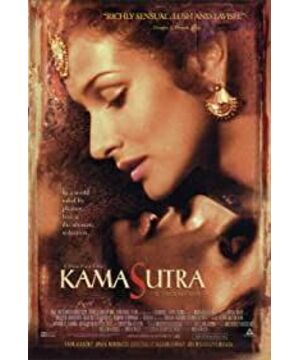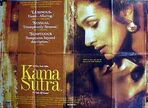When people talk about the Kama Sutra in India, it is always ambiguous. It seems that all ancient countries have similar books handed down, especially Kama Sutra is the most famous. Mira Nair's only Indian costume film directly uses this name, and naturally it is not free from such associations; the Chinese name is translated even more fragrantly: Wan Lu Bao Jian, which directly teaches people to think about "Fengyue Baojian". This film is really about the wind and the moon. The plot is vulgar anyway: the prince's favorite concubine falls in love with a folk sculptor. When the incident occurs, the sculptor is executed, the country is destroyed, and the favorite concubine runs away. But under the lens of Mira Nair, everything is not so simple. Mira Nair's feminist proposition is unmistakably revealed in the film. Maya had no control over her own destiny: even though she was beautiful and intelligent, and better in every way than Tara, who grew up together, she was a maid from humble beginnings, and Tara was a noble princess destined to become a princess. However, Maya, who is very strong by nature, wants to take the initiative in everything, and the status of women at that time is doomed to her failure, and the whole tragedy stems from this. Kama Sutra's role in it, on the one hand, taught Maya and her lover to truly appreciate the doctrine of "absolute trust to the fusion of spiritual desires", and on the other hand, she became a weapon for Maya to control the prince in the bed after the failed love affair. That's all, I didn't see the need to have Kama Sutra high up in the title. There is another Indian movie, The Story of Kama Sutra, which is terrible and relevant. My own attitude towards this film is also quite contradictory: I was impatient to watch it at the end of the plot, and I recalled the amber castle glowing dimly in the setting sun, the bright yellow and red, a bay of clear water and Maya's smart eyes and graceful posture will be replayed from the beginning. Maybe I was actually using it to reminisce about everything I remember about ancient India. For a film, that's not really a success. But it's still too mean to call it "completely worthless for 8 bucks and 120 minutes" like IndiaStar. Off topic: About the location The film has two main locations: Amber Fort & Khajuraho. Amber Fort was built in the 16th century on the outskirts of Jaipur, the "pink city", and I suspect that Mira Nair set the date for the film. The entire castle is built on a hill, commanding and imposing. Because it is made of milky white, light yellow, rose red and pure white stone, it looks like amber from a distance, so it is called the Amber Castle. So far, tourists are still riding elephants when entering the fort. Maya practiced Kama Sutra in Khajuraho, the "city of temples" in central North India, famous for its magnificent 10th-century temple complex, from which the exquisite ornate sex sculptures came from. Here are the most famous sculptures of Mitra lovers in India. People who have followed Kama Sutra have seen the pictures, but they don't know the source. Alas, for these two locations alone, this is the most beautiful Indian movie I've ever seen. In addition to Mira Nair's color scheduling and picture sculpting, it is indeed a "visual feast". There is also a very, very important point, there is no inexplicable Indian song and dance that sings and dances. So, recommended.
View more about Kama Sutra: A Tale of Love reviews











